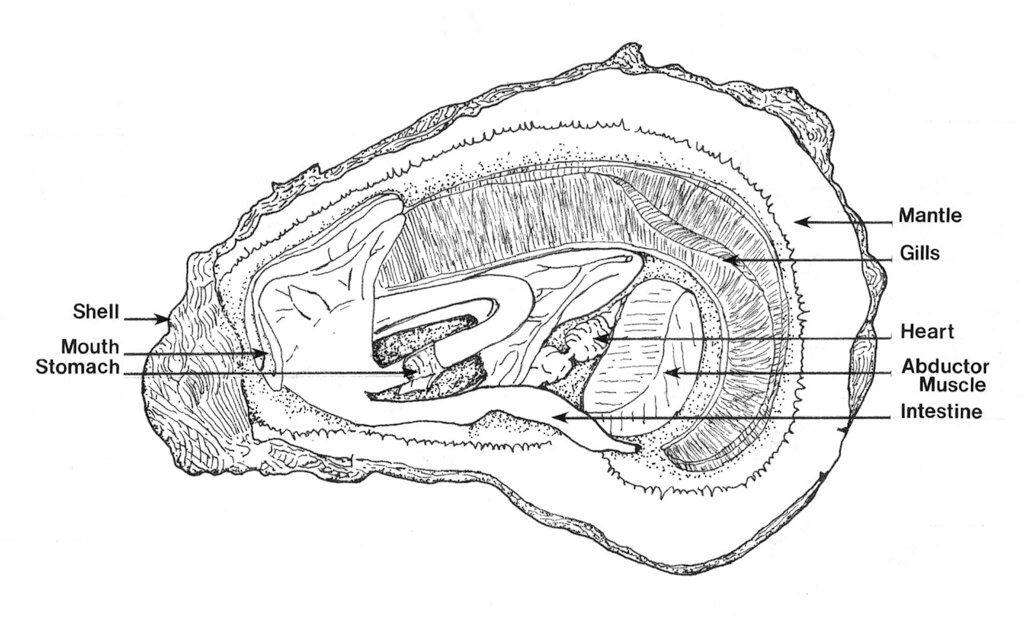Oysters

Diagram of Oyster Anatomy
Image credit: Louisiana Sea Grant at https://www.flickr.com/photos/88158121@N00/1042443264
About
There are currently over 200 identified species of oysters in the world. They are a type of bivalve mollusk, meaning they have hard, hinged exterior shells which contain their small soft bodies inside (NOAA 2018). Their shells are pear-shaped with many ridges and range in color from white to grey-brown. They eat by filter feeding; a process in which water, containing food and other material, is processed in their gills. Food, such as plankton, gets trapped and moved to the stomach to be digested, while sand and water are expelled back into the environment.
Oysters reproduce by spawning, a process which typically occurs in early spring and is enabled by fertilization in the water column. Oysters are generally able to begin spawning within a year of being born. On average, a single female oyster can produce 100 million eggs per season. These eggs hatch oyster larvae known as spat. In order to grow their shells, they secrete calcium carbonate that they collect from the water column. Juvenile oysters move around using a “foot” before settling down and attaching themselves to a hard surface, often another oyster’s shell. Adults are sessile, meaning that they stay in one place their whole lives. When many oysters attach themselves to one another in a single location, a formation known as an oyster reef is formed.
Known as marine ecological engineers (organisms that physically alter their environment), oysters are important to their ecosystem because they provide food and habitat to a variety of sea creatures while simultaneously cleaning the water around them. On average, a single oyster can filter over a gallon of water per hour. They are a food source for anemones, birds, flatworms, crabs, and of course humans (Chesapeake Bay Program 2020). However, humans rely on oysters as a food source in both the wild and in farmed settings. Additionally, oyster reefs provide shelter to organisms, such as crabs, that live on the bottom of the ocean.
Fun facts
- Oysters begin their life as males and mature to become females.
- Reefs can provide a natural barrier to storms (Gaskill 2016).
- Approximately 85-90% of the world’s reefs have been lost (Gaskill 2016).
Citations
Chesapeake Bay Program. 2020. Oysters. Chesapeake Bay Program.
https://www.chesapeakebay.net/issues/oysters, accessed 04/03/20.
Gaskill, M. 2016. 15 Shucking Amazing Facts About Oysters. Mental Floss.
https://www.mentalfloss.com/article/78400/15-shucking-amazing-facts-about-oysters, accessed 04/03/20.
NOAA. 2018. What is a bivalve mollusk? National Ocean Service website,
https://oceanservice.noaa.gov/facts/bivalve.html, accessed 04/03/20.
